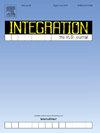Electronically tunable floating DXCCDITA-based universal memelement emulator and its applications
IF 2.5
3区 工程技术
Q3 COMPUTER SCIENCE, HARDWARE & ARCHITECTURE
引用次数: 0
Abstract
A universal memelement emulator is an electronic system that can emulate the behaviour of all three types of memelements (memristor, memcapacitor, and meminductor) with minor modifications to its arrangement. Despite significant technological advancements, the physical realization of memelements remains a challenging and unresolved problem, prompting ongoing research into innovative emulation techniques. This work presents a novel structure for a universal memelement emulator, which can be reconfigured into a desired memelement by manipulating the impedances within the proposed structure as either resistive or capacitive. The proposed circuit incorporates one dual X current conveyor differential input transconductance amplifier (DXCCDITA) and three passive components. The proposed structure can emulate a flux-controlled memristor, memcapacitor, and meminductor by appropriately choosing the impedances. The functionality of the proposed memelement emulator has been verified through simulations in LTspice utilizing TSMC 180 nm CMOS technology parameters. The proposed circuit shows satisfactory response up to 5 MHz frequency. Additionally, its functionality is verified using commercially available ICs. Furthermore, its practical utility is showcased by successful implementation in diverse applications, such as chaotic oscillator, high-pass filter, and adaptive learning circuit.
基于dxccdit的电子可调浮动通用元元件仿真器及其应用
通用记忆元件仿真器是一种电子系统,它可以模拟所有三种类型的记忆元件(记忆电阻器、记忆电容和记忆电感)的行为,只需对其排列进行微小的修改。尽管取得了重大的技术进步,但元件的物理实现仍然是一个具有挑战性和未解决的问题,这促使了对创新仿真技术的持续研究。这项工作提出了一种通用memelement模拟器的新结构,可以通过操纵拟议结构内的阻抗作为电阻或电容来重新配置为所需的memelement。该电路由一个双X电流传输差动输入跨导放大器(DXCCDITA)和三个无源元件组成。通过适当选择阻抗,所提出的结构可以模拟磁控记忆电阻器、记忆电容和记忆电感。利用台积电180纳米CMOS技术参数,在LTspice中进行了仿真,验证了所提出的memelement模拟器的功能。所提出的电路在5 MHz的频率下显示出令人满意的响应。此外,其功能使用市售ic进行验证。此外,其在各种应用中的成功实现,如混沌振荡器、高通滤波器和自适应学习电路,显示了其实际效用。
本文章由计算机程序翻译,如有差异,请以英文原文为准。
求助全文
约1分钟内获得全文
求助全文
来源期刊

Integration-The Vlsi Journal
工程技术-工程:电子与电气
CiteScore
3.80
自引率
5.30%
发文量
107
审稿时长
6 months
期刊介绍:
Integration''s aim is to cover every aspect of the VLSI area, with an emphasis on cross-fertilization between various fields of science, and the design, verification, test and applications of integrated circuits and systems, as well as closely related topics in process and device technologies. Individual issues will feature peer-reviewed tutorials and articles as well as reviews of recent publications. The intended coverage of the journal can be assessed by examining the following (non-exclusive) list of topics:
Specification methods and languages; Analog/Digital Integrated Circuits and Systems; VLSI architectures; Algorithms, methods and tools for modeling, simulation, synthesis and verification of integrated circuits and systems of any complexity; Embedded systems; High-level synthesis for VLSI systems; Logic synthesis and finite automata; Testing, design-for-test and test generation algorithms; Physical design; Formal verification; Algorithms implemented in VLSI systems; Systems engineering; Heterogeneous systems.
 求助内容:
求助内容: 应助结果提醒方式:
应助结果提醒方式:


